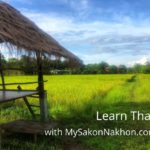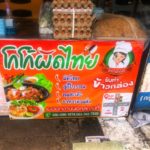Isan, Thailand: Culinary Capital
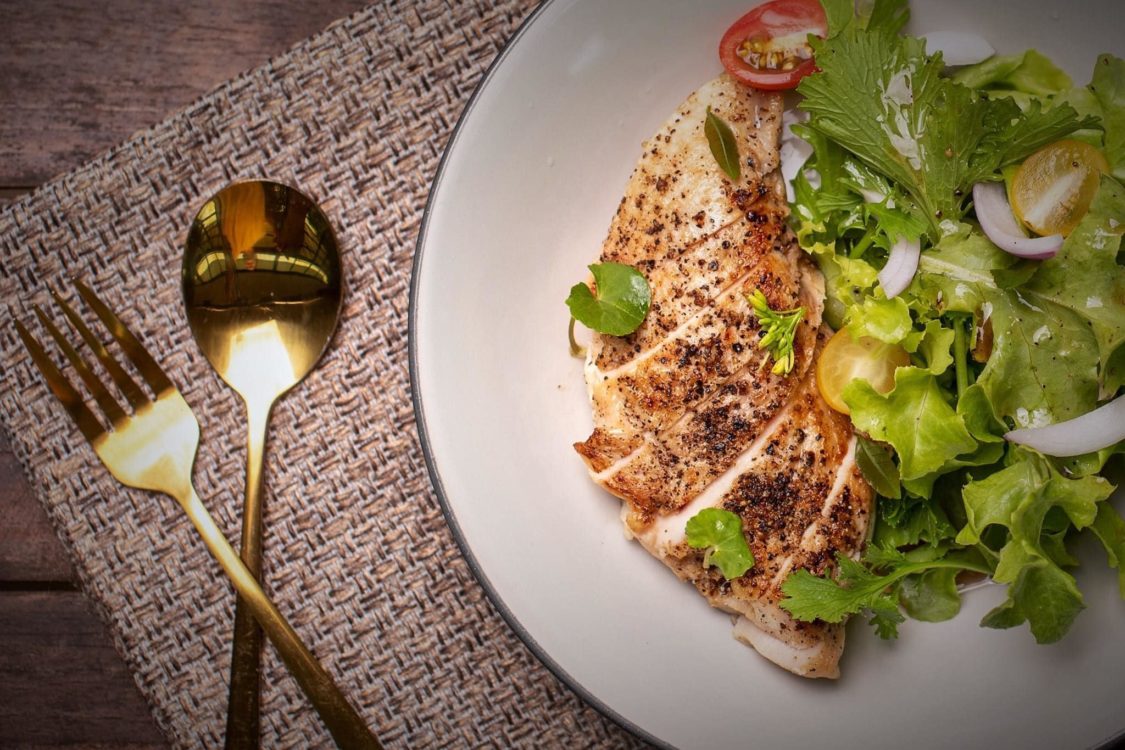
Time Magazine recently included Isan (The Northeast of Thailand) among its 50 Greatest Places of the World. It describes Isan (also spelled Isaan) as a culinary capital of Thailand, a region famous for its bold combinations of spicy, sweet, and sour flavors. It noted that Micheline expanded its Thailand guide this year to include Isan, awarding 33 Isan restaurants with the Bib Gourmand award (Michelin awards given to restaurants that offer excellent food at a reasonable price).
We congratulate Time magazine and Michelin for discovering Isan! However, we were disappointed to see that most of the Isan region is not included in Michelin’s Bib Gourmand awards. For example, Isan provinces such as Sakon Nakhon, Nakhon Phanom, Kalasin, Mukdahan, Nong Khai, Nong Bua Lam Phu, and Loei are all missing from Michelin’s online guide, even though they offer some of the most delicious and unique Isan food from the best Isan restaurants and roadside food vendors.
So, for those who read the article in Time magazine and are curious about Isan, Thailand as a culinary capital, we thought that we would provide further information about Isan food and restaurants, with a few tips for navigating your dining explorations in the Northeast of Thailand.
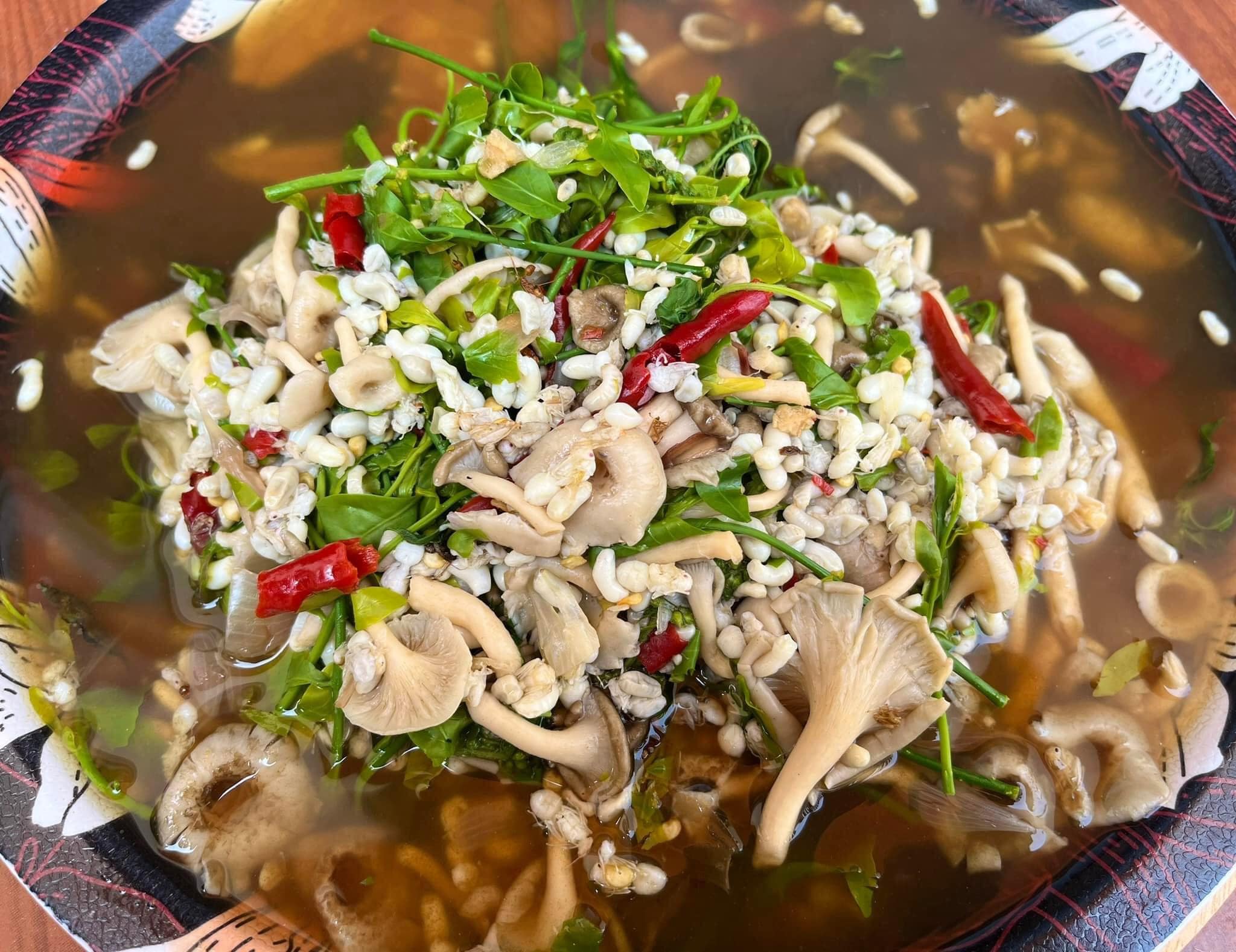
First, let’s talk about Isan caviar, which is red ant eggs. This item is often overlooked in discussions of Isan, Thailand as a culinary capital. But when it comes to food cravings among the Isan people, red ant eggs are near the top of the list. These eggs are added to curries, soups, and salads, and when foreign travelers taste them (without knowing what they are at first), they inevitably rave about how good they are. Read our full article on Isan caviar here: Hunting Red Ants in Thailand.
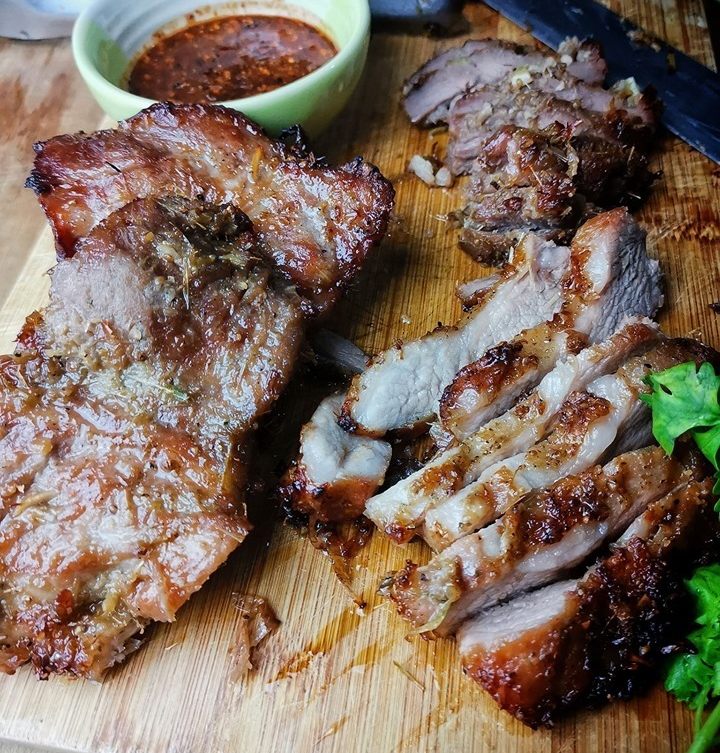
Next, we have our one of our favorite Isan dishes which we eat regularly: Khaw Moo Yang (คอหมูย่าง). This is pork neck grilled to perfection and served with a dipping sauce called “nam jim jaew” (น้ำจิ้มแจ่ว). Nam jim jaew is one of the great sauces of Thailand, and one of Isan’s most important contributions to the culinary world. It is a sour and spicy sauce made from tamarind paste, fish sauce, lime juice, chili peppers, garlic, sugar, and shallots.
However, not all nam jim jaews are created equal. You should definitely try it at different Isan restaurants and road vendors before deciding whether you are a fan or not. Note that khaw moo yang (grilled pork neck) has more fat than regular moo yang (grilled pork). If you are concerned about the extra fat, we highly encourage you to throw caution to the wind and order the khaw moo yang, because it is way more delicious, and we rarely see any fat Isan people who regularly eat khaw moo yang.
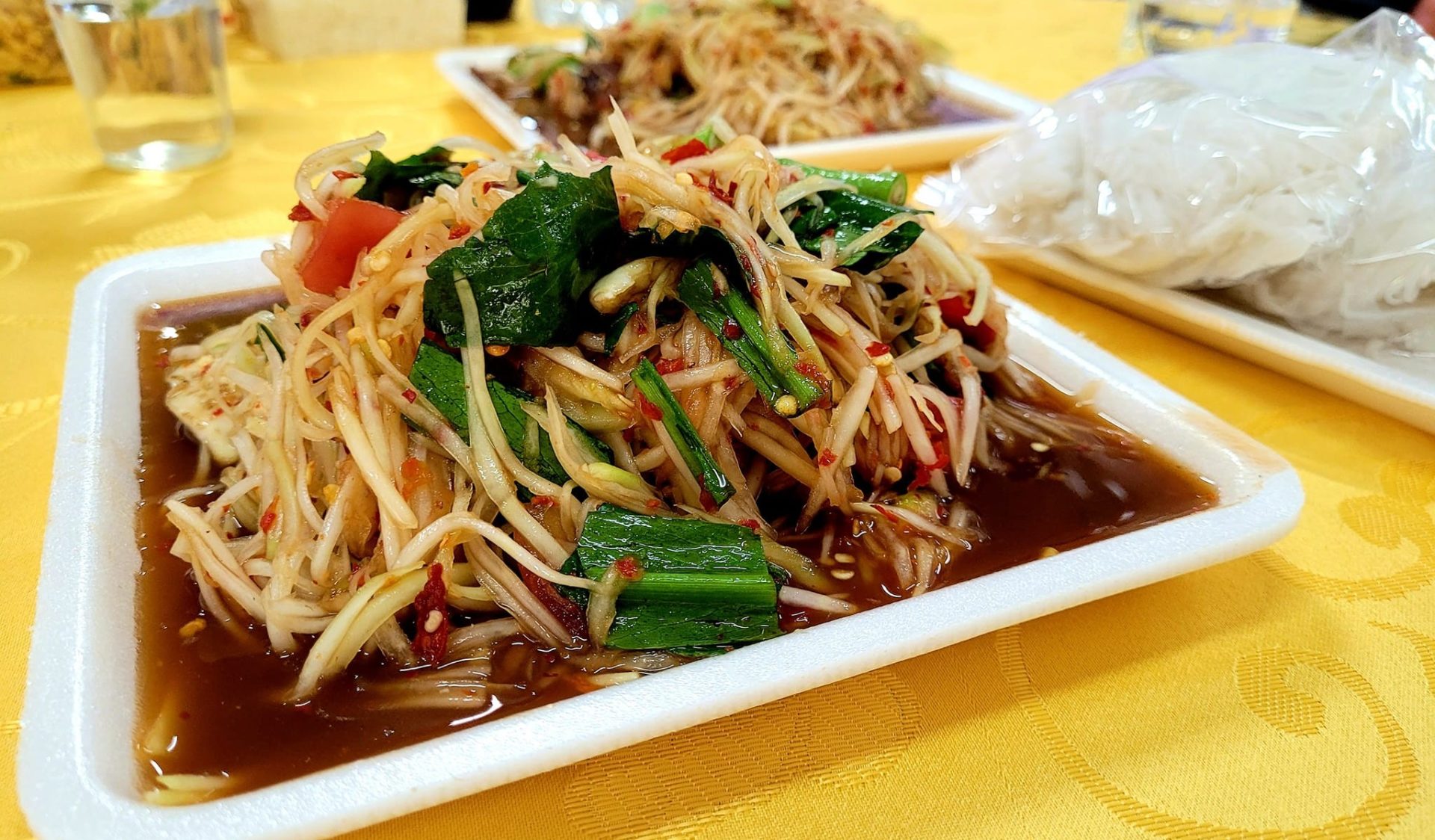
Most people who are familiar with Thai food know of the spicy papaya salad called Som Tam. The Time magazine article says that Isan gave us Som Tam. But that is unlikely. What Isan did give us is their variation known as Som Tam Lao (the word Lao being added because many of the Isan people are of Lao ancestry).
Som Tam Lao (ส้มตำลาว) is typically made with shredded green papaya, cherry tomatoes, green beans, garlic, chili peppers, fish sauce, lime juice, and palm sugar, just like regular Som Tam. However, it also includes a few additional ingredients, the most flavorful/pungent being “plar-a,” which is fermented fish sauce.
Som Tam Lao is a culinary excursion that people love or hate. You may love Som Tam Thai, but that doesn’t mean you’ll like Som Tam Lao. Many westerners think “pla-ra” stinks and its addition to Som Tam an offense to the senses, while other people adore it (similar to how different people feel about the “stinky” Thai fruit Durian). Also note that “pla-ra” is extremely high in salt and that it has caused allergic reactions in some people (such as breaking out in hives). So, the first time you try Som Tam Lao, it probably is best to only try a little, even if you love it, and see how your body reacts.
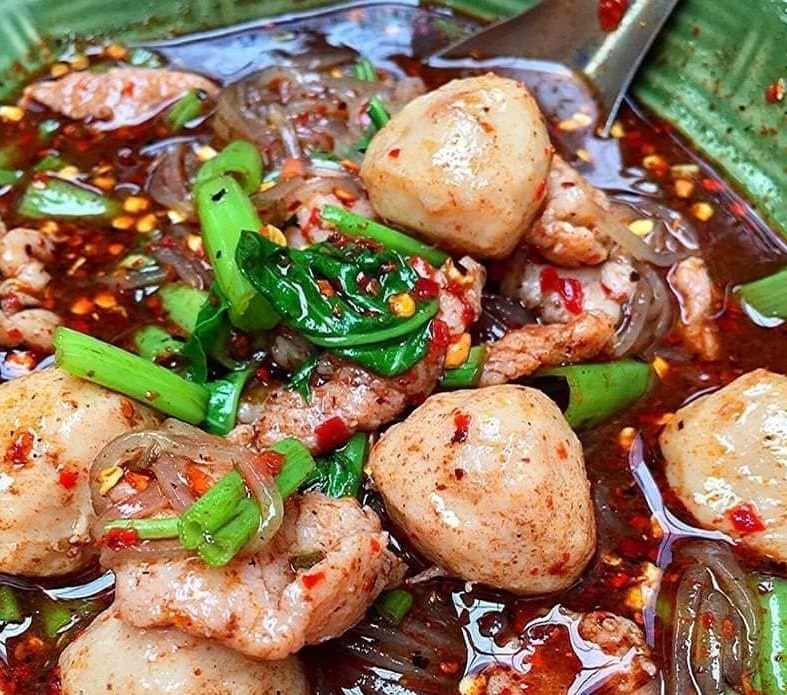
Every culinary excursion into Isan, Thailand must include visits to roadside noodle soup shops known as Raan Gŭai-dtĭao (ร้านก๋วยเตี๋ยว). There are basically 4 types that you will encounter, ones that do a variety of soups, those that specialize in beef or chicken, and ones that specialize in Gŭai-dtĭao Tom Yam and serve fried wontons with their soup. The key here is to know how to order noodle soups with or without blood, and how to order a regular or large portion. To order a large soup with a bloodless broth, you would say: gway-dee-oh nahm-sai, pee-set. To order a regular bowl with a blood broth, you would say: gway-dee-oh nahm-dok.
One thing unique about Isan noodle shops, compared to Thai noodle shops, is that the soup is often served with spicy grilled peppers that are skewered on a stick. You eat small bits of the peppers while eating your soup. The thinner and more straggly looking the pepper, the less spicy it is. The larger and thicker peppers can be extremely spicy. Learn more in our post about ordering Thai noodles. Another relevant article is our post on eating street food in Thailand.
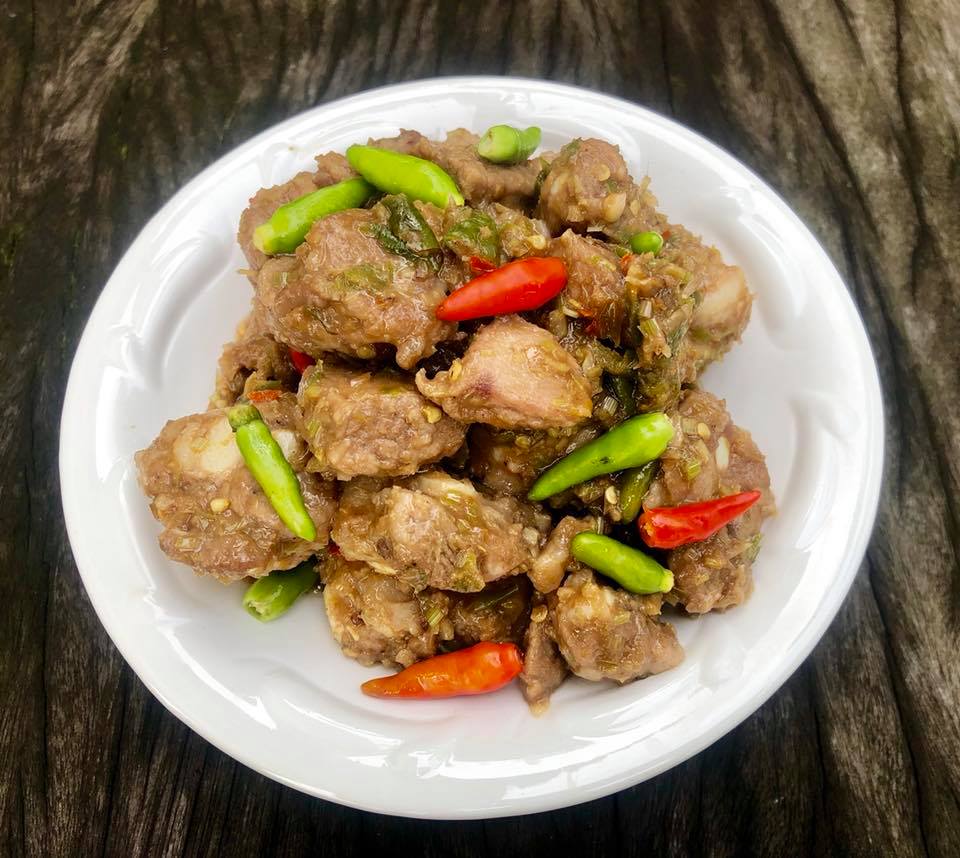
Other Isan Food Dishes
A few other culinary favorites among the Isan people include the following:
Pon Yang Kham Steaks: The finest steaks in Thailand come from the Isan province of Sakon Nakhon. Pon Yang Kham (โพนยางคำ) cattle are raised on small family farms in the area, where they are free to graze on natural grasses and foliage. The farmers take great care in raising the cattle, and the beef is known for its tender texture, rich flavor, and marbling. In one taste test, Pon Yang Kham even outdid Japan’s famous wagyu steaks. Learn more in our post on Pon Yang Kham beef.
Laap Moo Tod: A crispy pork salad made with minced pork that is deep-fried until crispy and then mixed with a spicy dressing made from chili peppers, lime juice, and fish sauce. Laap Moo Tod (หมูทอด) is typically served with sticky rice and fresh vegetables.
Tom Saep: A spicy and sour soup made with meat (usually beef or pork), lemongrass, galangal, kaffir lime leaves, chili peppers, and fresh herbs such as cilantro and mint. It is often served with sticky rice. Note that the word “saep” (แซบ) is the Isan word for delicious (read our article on how to say delicious in Thai). If you want to please an Isan restaurant owner by telling them how great their food is, you can say: Saep lai dtuh! (แซบหลายเด้อ).
Gai Yang: Grilled chicken that is marinated with garlic, lemongrass, and fish sauce, and then grilled over charcoal until it is crispy and flavorful. Gai Yang (ไก่ย่าง) is often served with sticky rice and the spicy dipping sauce “nam jim jaew” (which we mentioned earlier).
Pla Pao: A grilled fish that is typically marinated with lemongrass, garlic, and chili peppers before being stuffed with kaffir lime leaves and grilled over charcoal. Pla Pao (ปลาเผา) is served with a dipping sauce made from fish sauce, lime juice, and chili peppers, along with sticky rice and fresh vegetables.
Also read our article on ordering Thai food that is not spicy. All of the Thai dishes mentioned are made in Isan.
The Best Isan Restaurant Overlooked by Michelin Thailand
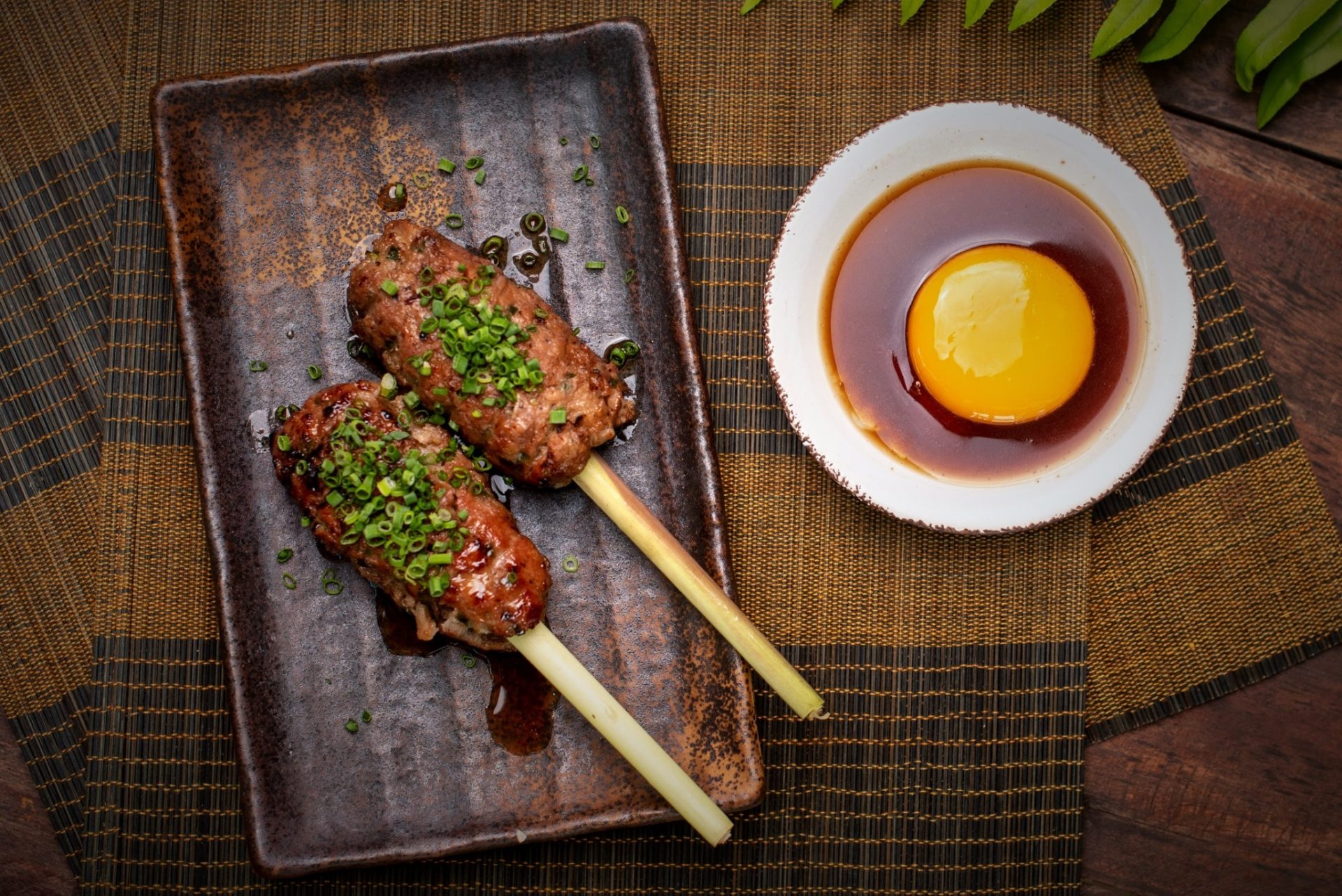
House Number 1712: Bone marrow, grilled until fragrant, topped with spicy Isan beef tails.
As we mentioned, the Michelin Guide is missing entire Isan provinces. One of the most fantastic restaurants they have yet to include is House Number 1712 in Sakon Nakhon. This restaurant creates traditional Isan food and Isan fusion dishes that you’ll find nowhere else in Northeastern Thailand. Their eclectic Isan menu is always changing due to the available of local ingredients and the growing seasons. They also manufacture their own coconut based white spirit, which makes for an an excellent aperitif! Learn more in our article on House Number 1712.
Do Isan Restaurants Serve Western Food?
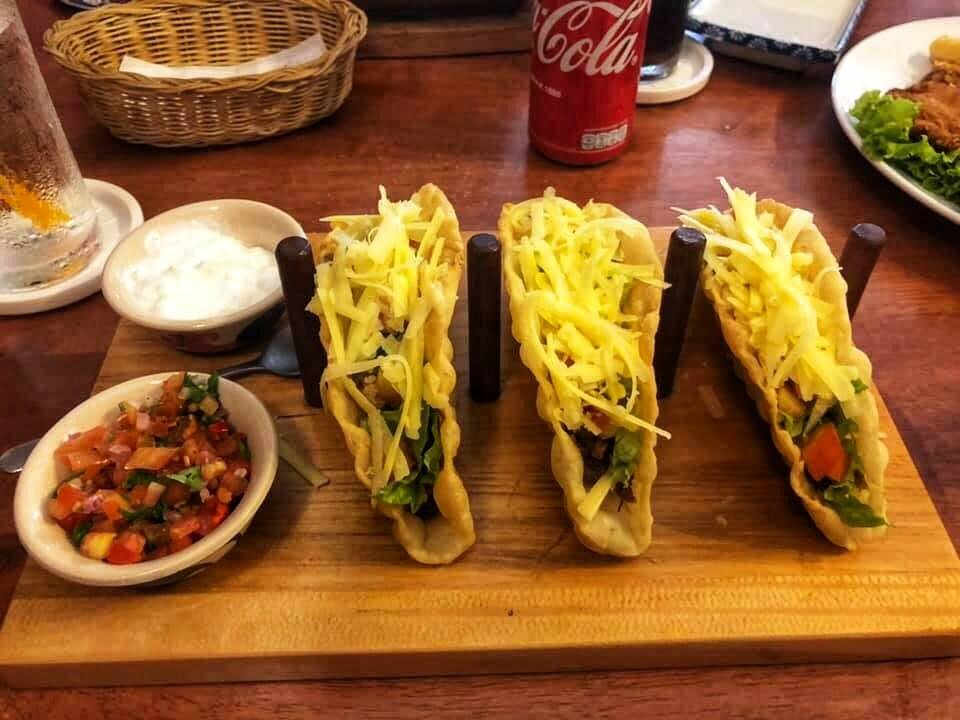
During an Isan, Thailand culinary excursion, there may be a time when someone wants to take a break from Isan food and eat something Western. If you have an Isan tour guide, it is also sometimes nice to visit a Western restaurant to buy them something to eat, as many Isan people love Western food but don’t it it very often because it usually is more expensive.
There are actually quite a number of Isan restaurants that serve Western food. Many places will have a few Western items like spaghetti, steaks, fried chicken, french fries, and burgers. However, these dishes are often not that great by Western standards. The basic rule of thumb for finding a restaurant in Isan that serves great Western food is to choose one that is also a bakery.
Why? Because this means that all of their sandwich and burger rolls are going to be top notch, their pizza dough handmade, etc. Plus the chefs who work at these bakery/restaurants in Isan tend to be more familiar with Western dishes in general, and often have been trained by American or German restaurant owners who have retired to Northeast Thailand. For example, in Sakon Nakhon the best Isan restaurant serving Western food is Apple’s Restaurant. They bake all of their own breads and buns, roll their own pizza dough in classic Italian style, and were trained by a retired American restaurateur.
Some Isan chefs have also created Isan-Western fusion dishes, using sour cream as a prominent ingredient, such as a popular Isan casserole called Som Tam Lungvid. Read how to make it here: Thai Food with Sour Cream.
So, that wraps up our brief overview Isan, Thailand and its status as a unique culinary capital. We encourage you to visit Isan and make Sakon Nakhon your starting point for your excursion into Northeast Thailand. Our website MySakonNakhon is the only English website dedicated to promoting Isan and Sakon Nakhon province. With our help, you can be assured of an Isan journey that is delicious, uplifting, and unforgettable.
- Affirmations in Buddhism & Thailand - June 7, 2025
- Speak Thai Naturally Without the Gymnastics - April 20, 2025
- The Best Learn Thai Podcast and YouTube Channel - April 10, 2025

